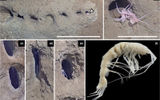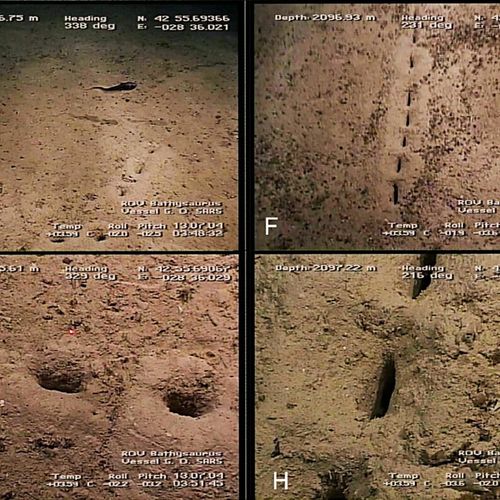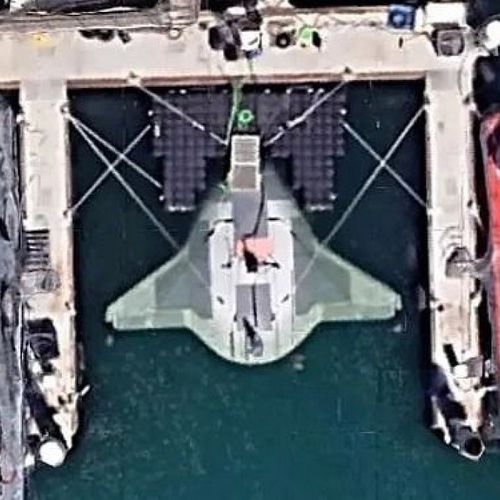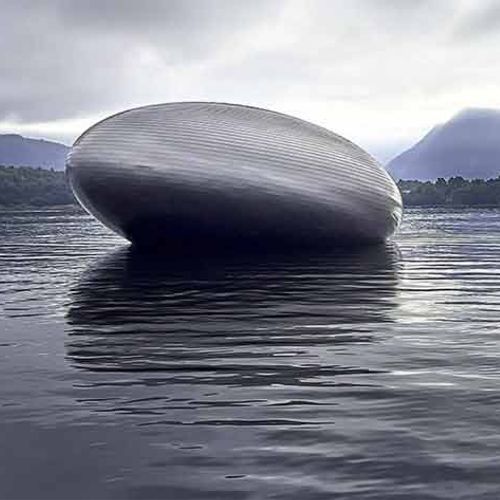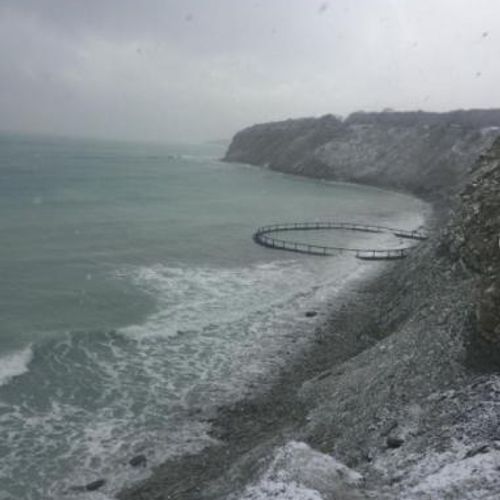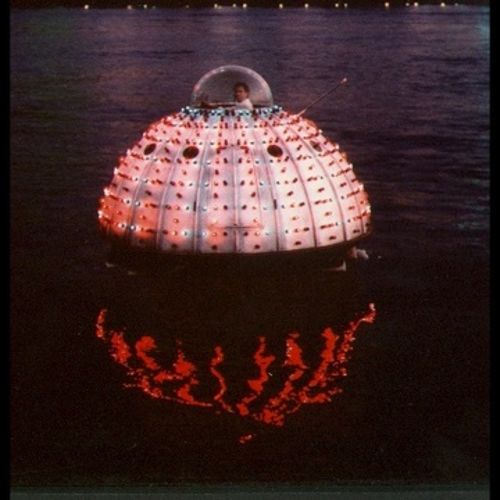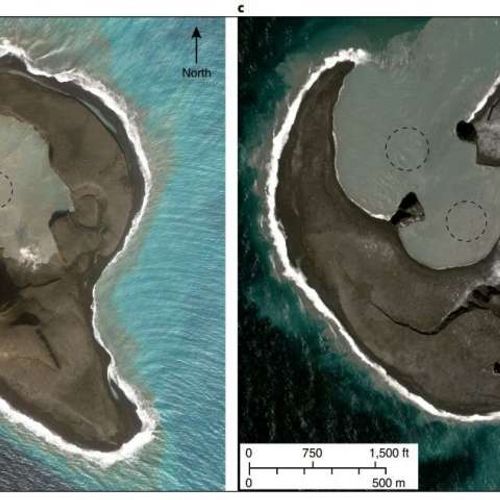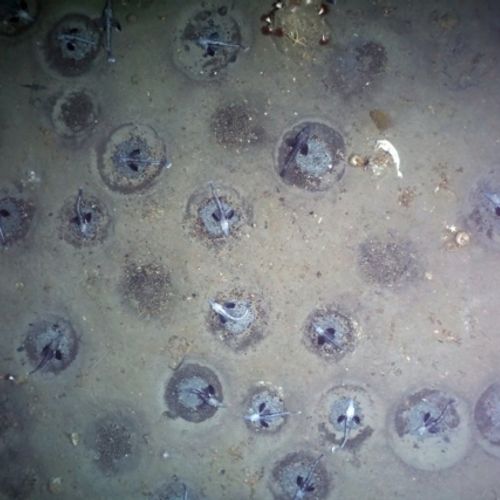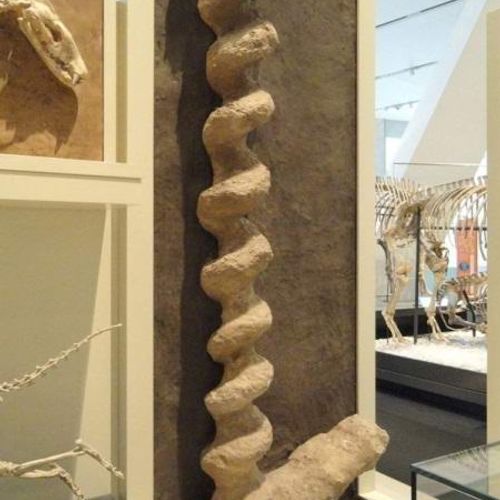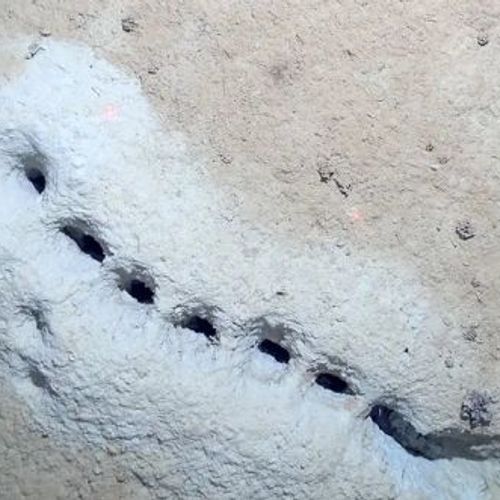
| Added | Sun, 09/04/2023 |
| Источники | |
| Дата публикации | Sun, 09/04/2023
|
| Феномены | |
| Версии |
Researchers have discovered mysterious rows of holes at the bottom of the Bering Sea. Previously, similar ones were found from time to time off the coast of the Azores. Apparently, the Pacific rows of holes belong to amphipod crustaceans, which scientists have seen inside and next to these structures. Perhaps invertebrates created them while feeding in the mud or built them as shelters or to lay eggs inside. The results of the study are published in an article for the journal Ecology and Evolution.
Last summer, experts from the US National Oceanic and Atmospheric Administration (NOAA) made an unusual discovery. Exploring a section of the Mid-Atlantic Ridge north of the Azores using a remote device, scientists discovered strange holes that were arranged in a regular order and were lined up in straight rows up to several meters long.
An analysis of the literature has shown that similar holes have been found from time to time on the ocean floor near the Azores Archipelago since the 1960s. However, during all this time, no one has been able to establish how these structures arise. On the one hand, due to the correct location, the rows of holes look man-made, as if they appeared as a result of the collection of cores by scientists. On the other hand, small piles of sediment around each hole indicate that they were dug up by some animals.
A team of specialists led by Julia D. Sigwart from the Zeckenberg Museum found out that similar structures are found in the Pacific Ocean. In July-September last year, researchers participated in the AleutBio expedition, the purpose of which was to study the deep-sea fauna in the Bering Sea and the Aleutian Trench using a camera-equipped remote device. At a depth of about 3,500 meters, the device captured rows of holes similar to those found in the Atlantic. In total, 196 rows located on an area of 5,660 square meters got into the lens of the device. All of them were located in the Bering Sea, while there were none in the Aleutian Trench.
There were from two to eleven holes in each row (an average of four and a half), and the average length of the row was about 34 centimeters. At the same time, all the holes in each row were connected to each other under the ground surface. Inside the structures and next to them, Sigwart and her colleagues saw a total of 96 animals. Small-eyed macrurus fish (Albatrossia pectoralis) swam around the rows, and in the holes and next to them were sea urchins, annelids, as well as crustaceans: equal-legged (isopods) and multi-legged (amphipods).
Researchers have suggested that amphipods were the builders of burrows. The rest of the animals found near the rows are either too large to dig such holes (this applies to fish and sea urchins), or their limbs are not suitable for this (isopods), or they dig holes of a different shape (annelids). In one picture, you can even notice an amphipod from the family Maeridae (possibly from the genus Maera), which carries sediment out of the burrow. In addition, similar large multi-legged crustaceans were observed several times inside the holes. Amphipods probably dig holes using gnatopods — the first pair of pectoral legs that are usually used to grab prey.
Why amphipods build such unusual burrows is still unclear. Perhaps these structures arise as a result of feeding on nutrient-rich silt or are used as a shelter or for laying eggs. At the same time, the shape of the burrows, which are long tunnels with numerous exits to the surface, can be explained in different ways. Perhaps it is simply easier for the amphipod to throw soil to the surface near the place where it is digging, rather than carrying it to the only exit. On the other hand, numerous holes can direct the flow of water carrying dissolved oxygen and nutrients into the burrow.
The exact type of amphipods that create the holes has yet to be determined. Most representatives of the genus Maera from the Bering Sea live in shallow water, so crustaceans from a depth of 3500 meters may belong to another species. To establish its ownership, the authors plan to carefully study the captured specimen, which is now stored in the Zekenberg Museum.
The authors emphasize that the rows of holes created by amphipods play an important role in ecosystems, providing other animals with shelters. Due to this, more species of living organisms were found in areas with holes than where there were no such structures. Thus, amphipods make deep-sea communities more diverse due to changes in microrelief.
It should be noted that the rows of holes from the Bering Sea differ from those that can be seen near the Azores Archipelago. For example, no fauna has ever been seen near the Atlantic rows, and they themselves were located at a lower depth. And Pacific structures are shorter and always surrounded by a shaft of soil. Although it remains likely that the rows of holes off the coast of the Azores are also built by amphipods, researchers are inclined to think that they are created by some other creatures.
Australian and Japanese ichthyologists have discovered the deepest-sea fish in the world. It was filmed using an unmanned underwater vehicle in the Izu-Bonin trench to the southeast of Japan at a depth of 8336 meters. It was not possible to establish the species of the record holder, however, most likely, it is a sea slug from the genus Pseudoliparis.
Связанные факты
Новости со схожими феноменами
Новости со схожими версиями
Log in or register to post comments

